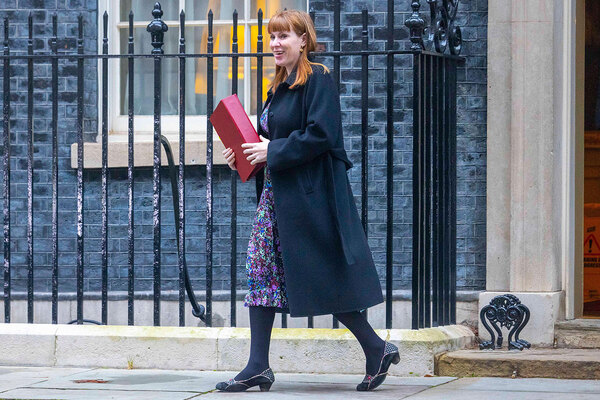Rent-setting in England: how are HAs weighing up their options?
As the government announces a consultation to cap social rent rises in England next year, Social Housing reports on how housing associations have been weighing up the dilemma of rent-setting
Housing association bosses are paid to make big decisions. But the dilemma they have been facing over rent increases for next year is one of the most challenging decisions of recent times.
It comes as soaring inflation means costs are spiralling, while their tenants face a deepening cost of living crisis.
The current rent standard, which came into effect in April 2020, permits rents to rise by up to the Consumer Price Index (CPI) plus one per cent based on the previous September’s CPI figure.
The CPI increased by 10.1 per cent in the 12 months to July 2022. So as things stand, this would have allowed providers to put their rents up by more than 11 per cent next April. This follows a permitted rise of up to 4.1 per cent last April, which faced criticism in some quarters at the time.
Now, it seems the decision may in part be taken out of associations’ hands, with the government today announcing a consultation on a proposed rent cap – at three, five, or seven per cent – next year.
The proposed ceiling – at whatever level it is set – would limit the potential rental income of associations at a time that they too face soaring costs. Analysis of Office for National Statistics data for the National Housing Federation by the Centre for Economics and Business Research (CEBR) recently placed annual growth rates for the cost of repairs materials and building new homes at 14 per cent and 12.3 per cent respectively.
However, even before the consultation announcement, noises from within the sector suggested that the majority of housing associations would not raise rents by the full amount permitted, in order to protect their tenants.
Speaking to Social Housing before the consultation was unveiled, James Prestwich, director of policy and external affairs at the Chartered Institute of Housing (CIH), told Social Housing he hadn’t spoken to anyone who was “even considering passing on anything like the full increase to their tenants”.
However, only a few decisions on what the correct level might be had been reached.
Associations Social Housing spoke to before the announcement was made revealed they were still in the information-gathering stage. This included stress-testing and modelling various scenarios around different levels of rent increases, ahead of the final CPI level for September being known.
Deep dive
Many associations said that their boards would take a deep dive into the problem and decisions would most likely be made by the end of the calendar year.
Now, with a consultation under way, the government will likely lift the decision from associations’ hands. But what do the numbers look like?
A government impact assessment published alongside the consultation estimates that, compared to a ‘do-nothing’ approach in which current rent policy is unchanged, a three per cent ceiling on rises would result in social housing providers receiving £9.9bn less in rental income over the period 2023-28, of which £6.5bn relates to registered providers and £3.4bn to local authorities. It places the impact of a five per cent cap at a £7.4bn loss (£4.9bn and £2.5bn respectively), compared to the do-nothing approach and the seven per cent ceiling at a £4.9bn loss to rental income (£3.2bn and £1.7bn respectively).
Social Housing spoke to several associations in the days and weeks leading up to today’s announcement, before precise details (including the proposed levels for a cap) were revealed.
Paul Fiddaman, chief executive of 30,000-home Karbon Homes, said the organisation would lose £250m over the next 30 years if it only increased rents by five per cent, assuming CPI peaks at 10 or 11 per cent.
He said that after modelling a number of scenarios – from a rent freeze to a cap on rises at six per cent – it was looking likely that the group would settle at around five per cent because that’s “probably as much as we could reasonably pass on”.
Mr Fiddaman said: “Our view as an organisation is you cannot ignore, or in all conscience implement, double-digit increases at a time when many of our customers will be struggling and are being hit on all sides by cost inflation.”
Caroline Moore, chief financial officer at Abri, said that if the 35,000-home group capped rents at five per cent for a two-year period, it would lose half a billion pounds out of future rental income over its 30-year business plan.
Ms Moore said that its costs were rising by about eight per cent and development cost inflation is running at higher than 10 per cent. The group had been modelling many scenarios and was yet to make a decision, she said.
“It’s about finding the balance between what’s affordable for customers, and we have to protect the viability of the strength of the business as well,” said Ms Moore.
Mark Washer, chief executive of Sovereign, said that the 60,000-home group would lose around £15m a year if it raised rents by five per cent instead of circa 10 per cent, as its rental income is in excess of £300m.
If Sovereign could never recover that £15m, then between £250m to £300m would be lost from its 30-year business plan, he explained.
“While Sovereign is financially strong and could weather this, there would still be an impact on underlying expenditure,” Mr Washer added.
Phil Elvy, finance director of Great Places, said that with its annual rental turnover at almost exactly £100m, raising rents by seven per cent would cost the 24,000-home landlord around £7m a year. All the while costs are rising, which quickly eats away at its surplus.
He said the group would be looking at options and understanding the short-term impact before modelling for the full 30 years.
“We’re going to have a lot of delicate balancing acts to ponder,” said Mr Elvy.
“Our view as an organisation is you cannot ignore, or in all conscience implement, double-digit increases at a time when many of our customers will be struggling and are being hit on all sides by cost inflation”
Meanwhile, Liz Casey, deputy chief finance officer at Platform, said the 47,000-home landlord would lose around £90m across its 30-year business plan for every one per cent it caps rents, while a rent freeze would cost £960m.
She said: “It’s such a difficult issue, every one of us is going to have a slightly different opinion and I think we’re just going to have to come to a consensus decision.”
Housing associations will be forced to try and make some savings this year, through cutting back plans or becoming more efficient.
With the financial balancing act associations face, due to building safety spend and decarbonisation, some associations are already re-thinking their development programmes.
And while this area may be one of the last that chief executives would like to scale back on, for some it may be inevitable.
Ms Casey said that Platform’s aim to be building 2,000 homes a year is “turning into an ambition rather than a target now”. The potentially lower income from rent, inflation and issues around supply of materials and labour are all expected to have an impact, she says.
“I think we probably will end up not delivering to that,” Ms Casey adds.
Housing associations may cut back on future developments, but it depends on the organisation and its finances.
Mr Fiddaman said after drawing down a bond in 2020, Karbon Homes has the cash to deliver a big chunk of its development programme. “Our financial plans are hit harder by stopping development than they would be if we continue development,” he said.
Decarbonisation
Another area housing associations are having to weigh up is decarbonisation.
Currently, landlords’ properties have to achieve an Energy Performance Certificate (EPC) of Band C or higher by 2030 and become carbon neutral by 2050.
Decarbonisation will benefit tenants in the long run by making homes more energy efficient and thus reducing energy bills.
But with the deadlines further away, landlords could be tempted to slow their plans on net zero. Platform, for example, is looking at postponing its retrofitting by 12 to 18 months and has pushed back its EPC Band C target from 2028 to 2030.
Mr Prestwich said if he was running a housing association, development would be the “first thing” he would look to scale back, followed by net zero plans.
“I would start pushing back some investment decisions on net zero in the hope that this or a future government will be able to help plug some of that gap with grant funding,” he said.
Housing associations will also be trying to become more efficient to make savings. Platform is talking to residents and asking for feedback on proposals to cut back on some services, such as by cutting grass less frequently.
“I think it will be fair to say there isn’t necessarily a lot of fat to trim for organisations. They’ve already done that in the face of the rent cap”
Karbon Homes is looking to use technology to provide a more effective way of delivering its services and grow without hiring additional staff. Meanwhile, Abri is bringing more services, such as grounds maintenance, communal painting and cleaning, in house.
However, the sector is already used to efficiencies after associations were forced to make savings when then-chancellor George Osborne abandoned the 2013 rent settlement in 2015.
Mr Prestwich said the cut took “significant capacity” out of the sector, and organisations went through a process of delivering much of those efficiency savings at that point.
“I think it will be fair to say there isn’t necessarily a lot of fat to trim for organisations. They’ve already done that in the face of the rent cap.”
Aside from managing their estates and their tenants, housing association leaders are having to ensure their organisations remain attractive to the markets for financing requirements.
Credit ratings agency S&P warned last month that if the gap between cost increases and rental income continues, then social housing providers’ creditworthiness could suffer.
The agency found that 12 out of the 43 housing providers it rates could see very weak interest coverage if they are unable to cover cost increases, which would put their ratings under pressure.
Ms Casey said Platform is “keeping a watching brief” on what it is doing and is trying to provide ratings agencies and other investors with as much information and reassurance as possible.
Rents under review: the government’s shifting policy on social housing rents
2013: The coalition government announces social housing rents will rise by the Consumer Price Index (CPI) of inflation plus one per cent for 10 years from 2015-16.
2015: Chancellor George Osborne scraps the 2013 settlement, instead announcing social housing rents will fall by one per cent per year for four years, to cut housing benefit spending.
2017: Prime minister Theresa May reveals plans to revert to five years of rent rises at CPI plus one per cent from 2020.
2020: The new five-year rent standard comes into force from 1 April.
2022: On 31 August, the government announces a six-week consultation to introduce a proposed rent cap at three per cent, five per cent or seven per cent on rent rises for the 2023-24 financial year, and “seeks views on whether to set a limit for 2024-25”.
Trade-off
With all the risks facing housing associations, some believe these could be allayed through a trade-off with the government. Some chief executives and trade bodies, such as the G15, have been in talks with the government around future rent policy.
They want the government to introduce a new mechanism allowing them to raise rents slightly this year, but then increase them more when inflation is lower and the economy has recovered.
Mr Elvy said: “A mechanism to be able to recover in future years would be very helpful and give more comfort to our board that they can make a bold decision this year knowing we can recover in future years.”
Chief executives must also weigh up how their tenants will cope with any significant rent increases, amid the cost of living crisis.
Some providers are seeing arrears rise, or they expect an increase over the winter months.
Catherine Ryder, director of policy and research at the National Housing Federation, said: “Housing associations are concerned about the impact rising living costs are having on social housing residents and are thinking very carefully about their approach to future rent increases, as well as looking at what more support they can put in place for people who are struggling.”
Ms Nanda said that any decisions by members’ boards will be taken after “careful consideration”.
She continued: “In getting the balance right, we are committed to maintaining affordability for residents.”
Housing associations have difficult decisions to make on raising rents and where they will make savings amid an array of spending priorities, ranging from development, building safety and net zero.
It is clearly an area with no simple solutions.
As Mr Prestwich concluded: “I think this is probably the most challenging time that I can think of in the 20 years or so that I’ve worked in the social housing sector. There aren’t any easy answers.”
Interviews for this analysis preceded the government’s consultation announcement on 31 August. Follow Social Housing’s ongoing coverage for the latest sector reaction
Sign up for Social Housing’s weekly news bulletin
Social Housing’s weekly news bulletin delivers the latest news and insight across finance and funding, regulation and governance, policy and strategy, straight to your inbox. Meanwhile, news alerts bring you the biggest stories as they land.
Already have an account? Click here to manage your newsletters.
RELATED








